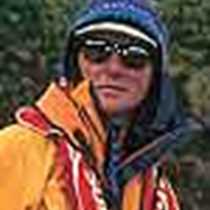Fair Isle, Shetland Islands, U.K.
Northern gannets accompanied us to our anchorage at Fair Isle, Britain’s most isolated inhabited island. The nutrient-rich waters of the North Atlantic provide an abundance of food for the seabirds. Fair Isle is famous for its birds – passing migrants, local residents, and rare visitors. It is also renowned for its fine wool, and in fact, orders have to be taken a year in advance for their finely handcrafted sweaters. The highlands of the isle are windswept moorlands where sheep graze. The coastal areas are fringed by steep bird cliffs, caves, grottos, and beaches, while the lower elevations are more sheltered with fertile land for farming. Sixty hardy people live on and operate small farms, and the community is nearly self-sufficient. They fish when the weather permits, bait crab and lobster pots and sell the extra catch to the folks in Lerwick, and grow most of their own vegetables and crops. Hay is still cut by traditional methods, and mechanization overall is limited on the island. I personally spotted 5 vehicles of various sizes, three of which were commandeered for local taxis to zip us to and from the landing bay, the lighthouse, the museum, and the community center.
Brent and Steve led a hike up to the famous bird cliffs where we looked down on grey seals and fulmar nests. Arctic terns, great skuas, and parasitic jaegers nested in the heather, and we even saw one lone puffin circle overhead, land and deliver sand eels to its puffling which was tucked up inside an excavated burrow. Karen led a more leisurely walk focusing on, “lots of things, but particularly on plants and slugs”. David went for a dive on the wreck of the Gran Griffon from the Spanish Armada and got footage of the 400-year-old anchor and cannon. Shaun, Tom, and Vinnie deftly maneuvered our Zodiacs into eroded Devonian sandstone caves inundated by the sea piercing into the island. David, James, and Tom led us on a stroll; a good “country mile” from the landing to the community center. Despite the occasional raindrop, we enjoyed the pleasant walks and the warm and friendly hospitality of the island’s community.
Northern gannets accompanied us to our anchorage at Fair Isle, Britain’s most isolated inhabited island. The nutrient-rich waters of the North Atlantic provide an abundance of food for the seabirds. Fair Isle is famous for its birds – passing migrants, local residents, and rare visitors. It is also renowned for its fine wool, and in fact, orders have to be taken a year in advance for their finely handcrafted sweaters. The highlands of the isle are windswept moorlands where sheep graze. The coastal areas are fringed by steep bird cliffs, caves, grottos, and beaches, while the lower elevations are more sheltered with fertile land for farming. Sixty hardy people live on and operate small farms, and the community is nearly self-sufficient. They fish when the weather permits, bait crab and lobster pots and sell the extra catch to the folks in Lerwick, and grow most of their own vegetables and crops. Hay is still cut by traditional methods, and mechanization overall is limited on the island. I personally spotted 5 vehicles of various sizes, three of which were commandeered for local taxis to zip us to and from the landing bay, the lighthouse, the museum, and the community center.
Brent and Steve led a hike up to the famous bird cliffs where we looked down on grey seals and fulmar nests. Arctic terns, great skuas, and parasitic jaegers nested in the heather, and we even saw one lone puffin circle overhead, land and deliver sand eels to its puffling which was tucked up inside an excavated burrow. Karen led a more leisurely walk focusing on, “lots of things, but particularly on plants and slugs”. David went for a dive on the wreck of the Gran Griffon from the Spanish Armada and got footage of the 400-year-old anchor and cannon. Shaun, Tom, and Vinnie deftly maneuvered our Zodiacs into eroded Devonian sandstone caves inundated by the sea piercing into the island. David, James, and Tom led us on a stroll; a good “country mile” from the landing to the community center. Despite the occasional raindrop, we enjoyed the pleasant walks and the warm and friendly hospitality of the island’s community.




